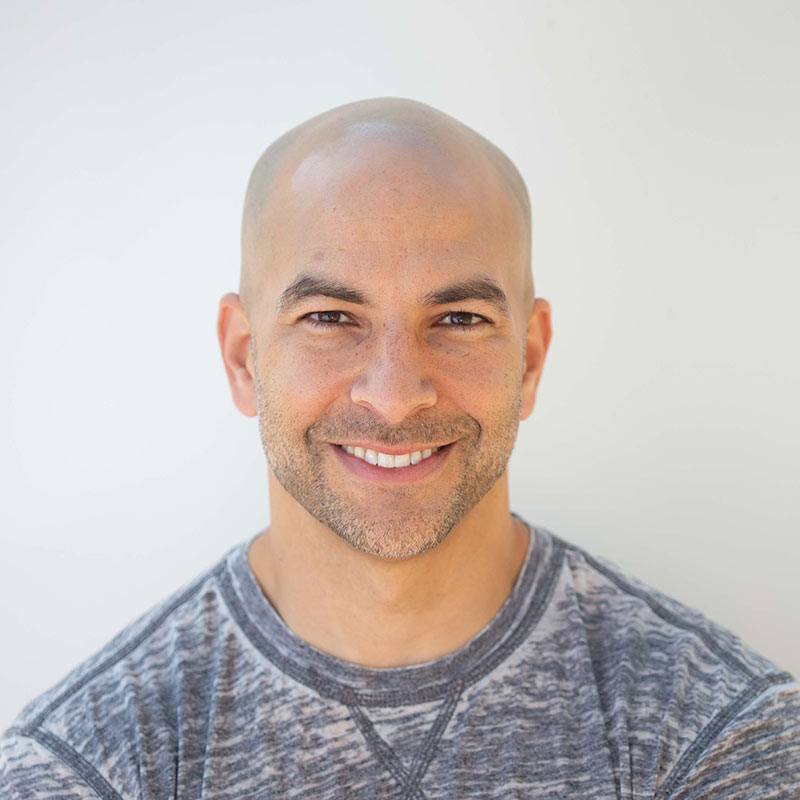Medical Interventions (TRT, HGH, Stem Cells, etc.) For Longevity
Sinclair and LaPlante explore cutting-edge anti-aging interventions. They discuss the latest research on testosterone replacement therapy (TRT), human growth hormone (HGH), peptide supplementation, exosomes, stem cells, and cellular reprogramming.
Key Takeaways
Source
We recommend using this distillation as a supplemental resource to the source material.
Full Notes
Testosterone Replacement Therapy (TRT)
- Testosterone decreases as we age, causing concerns for many people
- TRT market has grown significantly in recent years
- Used for sexual dysfunction, mental health, building muscle, overall fitness, and vitality
- Feeling younger does not necessarily mean reversing biological aging
- Testosterone is an “abundance mimetic,” signaling the body that times are good for growth and reproduction
- Studies show improvements in libido, muscle mass, power, and aerobic capacity
- Risks of TRT: worse sleep apnea, larger breasts, bigger prostate, shrinking testicles, increased red blood cell production, blood clots, and potential aggravation of prostate cancer
- Eunuchs, who have lower testosterone levels, tend to live longer
Human Growth Hormone (HGH)
- Popular for addressing decreased exercise capacity, bone density, muscle mass, and increased body fat
- Short-term benefits include feeling better, growing muscle, and having less fat
- Long-term use may not be good for health and wellness
- Studies show that low levels of growth hormone and insulin-like growth hormone signaling can lead to longer lifespans in worms, mice, and humans (e.g., Laron dwarfs)
Key Takeaway
- Abundance mimetics like testosterone and HGH may provide short-term benefits but may not be conducive to long-term health and longevity
-
Adversity mimetics, which mimic lack of food and exercise, are more likely to promote long-term health and wellness
Growth Hormone and Aging -
Growth hormone supplementation can have negative effects
- Increased risk of cancer, heart disease, sore joints, carpal tunnel syndrome
- Increased insulin resistance, type 2 diabetes risk
- Benefits of maintaining natural, healthy hormone levels
- Exercise and sleep can help regulate growth hormone levels
Peptide Supplementation
- Peptides: strings of amino acids, smaller than hormones
- Help cells communicate with each other
- Can be synthesized or extracted from tissues
- Thousands of clinical studies on peptides
- Relatively safe, found in the body, metabolized quickly
- Can boost regenerative signaling, wound healing, lower blood sugar levels, increase mitochondrial activity
- Examples of peptides:
- Mots C: lowers blood sugar levels, increases mitochondrial activity, reduces fat in the body, improves fatty liver
- BP 157: increases blood flow, lowers inflammation, regenerates neurons for cognitive ability
- SS 31: targets mitochondria, improves mitochondrial function, potentially good for the heart and longevity
- GHK Copper: helps wound healing, attracts immune cells, stimulates collagen, protects tissues against inflammation, reduces fine lines and wrinkles, promotes hair growth
- FDA concerns and regulation
- Some peptides banned in the United States due to potential side effects and lack of knowledge
- Side effects can include redness, arthritis-type effects, and immunological reactions
Note: The information provided should not be considered medical advice. Always consult with a healthcare professional before making decisions about your health.
Peptides and Exosomes
- Anecdotal evidence of peptides’ benefits
- Movement to make peptides more available
- Thymusin Alpha One
- Known since the 1970s
- Helps fight bacterial and viral infections
- Banned in 2020, movement to bring it back due to potential COVID-19 benefits
- Other peptides
- Fat loss: Tessamorolin, CJC 1295, Ipamorolin, AOD 964, BPC 157
- Humanin: helps against type 2 diabetes, high blood sugar, cardiovascular disease, neurodegenerative diseases (in mice)
- Pinealon: treats memory, attention deficits, brain injury, stroke, chronic fatigue (early research)
- Combat fatigue and boost immune system: Dihexa, Cerebralysin, Semax, Selank, BPC 157 with Semax and Cerebralysin
- Need for placebo-controlled double-blind clinical studies
Exosomes
- Cellular signalers, membrane-bound vesicles containing peptides, DNA, RNA, and microRNAs
- Potential uses:
- Diagnose diseases, including cancer, through blood tests
- Help with injury and aging by rejuvenating senescent cells
- Research on exosomes
- Dongsheng Cai’s study: mice live longer with isolated exosomes
- Chinese study: exosomes reverse senescence in ulcer healing
- Current availability and caution
- Exosomes not banned in the US, but FDA may have safety concerns
- Long-term benefits and side effects unknown
Stem Cells
- Cells that can divide asymmetrically to produce various tissues
-
Two main classes:
- Multipotent: can make a few different types of tissues
- Pluripotent: can make any type of cell in the body
Induced Pluripotent Stem Cells
-
Cells typically obtained from an embryo
- Pluripotent stem cells can make any type of cell in any tissue
- Multipotent cells can transition into several different kinds of cells, but not all
Yamanaka Factors
- Shinya Yamanaka discovered a combination of genes that can turn adult cells into pluripotent stem cells
- These genes are KLF4, Sox2, c‑Myc, and Lin28
- This breakthrough allows scientists to take a skin cell and reprogram it into a pluripotent stem cell
Stem Cell Aging
- Stem cells age and undergo epigenetic changes, making them less able to regenerate new tissues
- Banking younger stem cells can be beneficial for future use in regenerative medicine
Stem Cell Therapies
- Researchers are using stem cells to regenerate and repair damaged tissues in various diseases, such as spinal cord injuries, type 1 diabetes, Parkinson’s disease, ALS, Alzheimer’s, heart disease, stroke, burns, cancer, and arthritis
-
Stem cells have the potential to replace aging stem cells and create new organs using induced pluripotent stem cells (iPSCs) or autologous stem cells from children and adults
Stem Cells and Aging -
Drawbacks of using stem cells to live longer
- Often don’t find their niche or resting place
- Can cause harm if not done correctly (e.g., blindness in Florida patients)
- Rejuvenating existing stem cells
- Reprogramming technology to reverse aging of stem cells
- Studies on stem cell therapy
- University of Miami (2017): Harvested stem cells from younger donors given to older, frail patients
- Showed improvements in walking distance, lowered cytokine levels, improved mental state, and reported quality of life improvement
- Mesenchymal stem cells used for joint issues
- Therapeutic for a short amount of time, unclear if due to stem cells staying in place or secreting exosomes/peptides
- University of Miami (2017): Harvested stem cells from younger donors given to older, frail patients
Cellular Reprogramming
- Yamanaka factors: Reset the age of a cell back to zero
- Can cause cancer and death in mice
- Wancheng Lu’s discovery: Set of genes that reverse the age of cells and tissues without negative side effects
- Used three Yamanaka factors (o, S, and K) instead of all five
- Successfully reversed age in mouse eye cells, skin cells, and muscle cells
- Potential for human application
- Hope to restore vision in human patients with glaucoma or genetic diseases within a year or year and a half
- Future possibility of a pill to reset age of the whole body
Treatment Regimen with Metformin
-
Dr. Greg Fahey’s triple treatment
- Growth hormone, DHEA (depleted during aging), and metformin
- Mitigates negative effects of growth hormone
- Tested on 10 healthy men aged 51–65 for 12 months
- Result: Biological clock of men went back 2.5 years
Reversing Aging with Combinatory Therapy
-
Small scale trial using human growth hormone (HGH), metformin, and DHEA
- HGH shown to reconstitute the thymus, important for the immune system
- Metformin and DHEA help control blood glucose levels
- Measuring the clock in the blood may not indicate whole body rejuvenation
- Other clocks to consider: proteomic clock, glycan age, immuno age
- Repeated treatments over a year show reduced age based on blood clock
- Jury still out on whether this is truly reversing aging or just some aspects of blood aging
Eagerness for Anti-Aging Treatments
- People are eager to access potential anti-aging treatments
- Going overseas, finding doctors and suppliers online
- More research and work needed to confirm safety and effectiveness
- Slowing down the biological clock with lifestyle changes can buy time for therapies to mature
Future of Anti-Aging Research
- Rapid advancements in reprogramming the body and measuring biological age
- Hard to predict where the field will be in 5–10 years
- Living an extra year could potentially grant another year of life in the future



